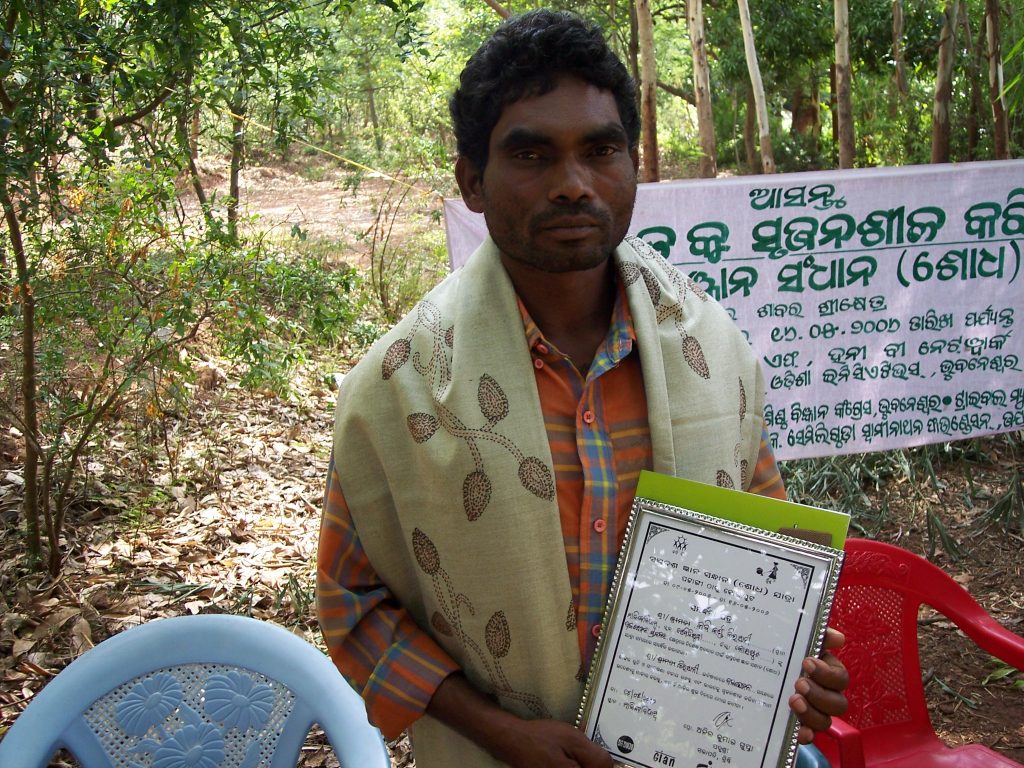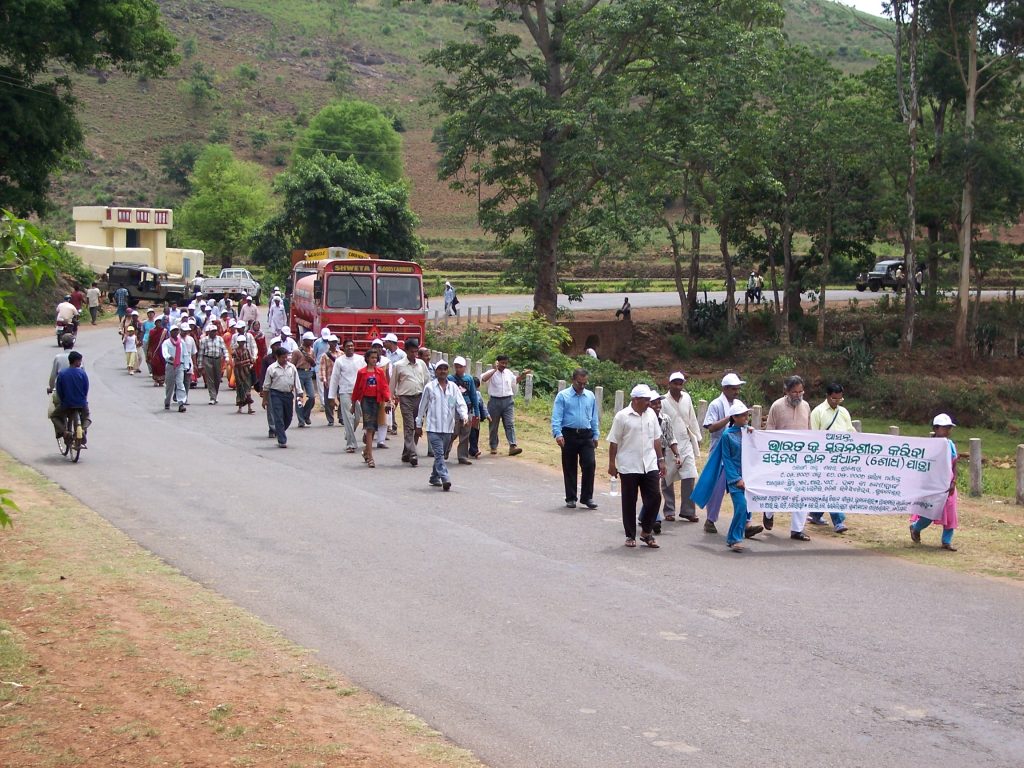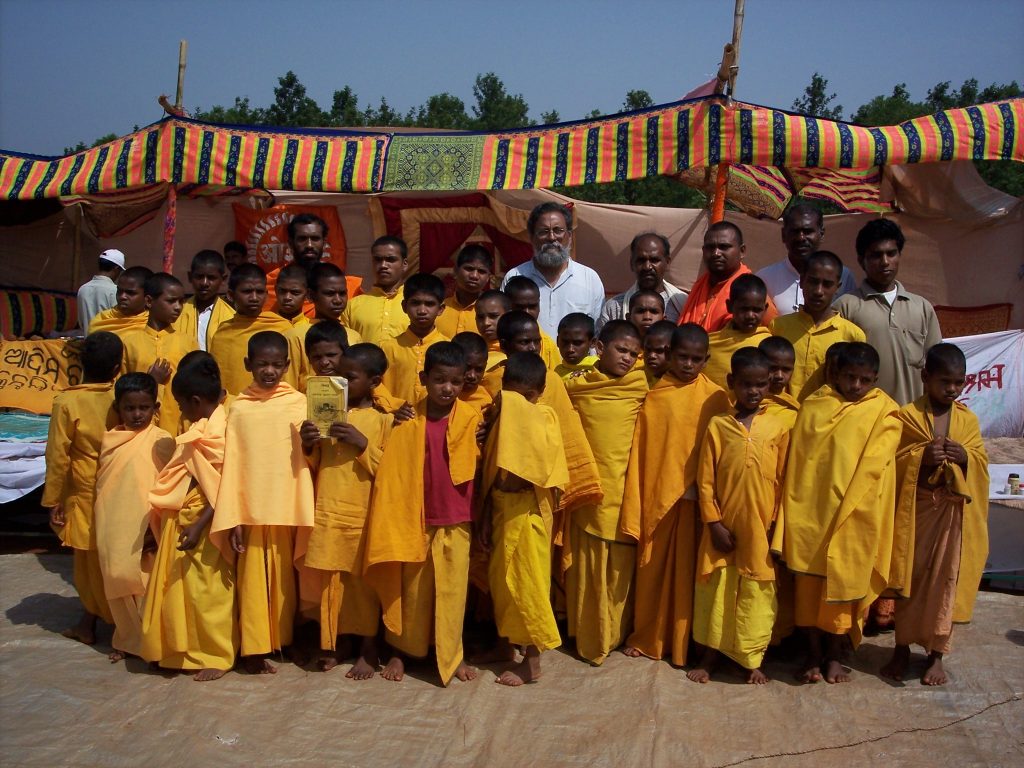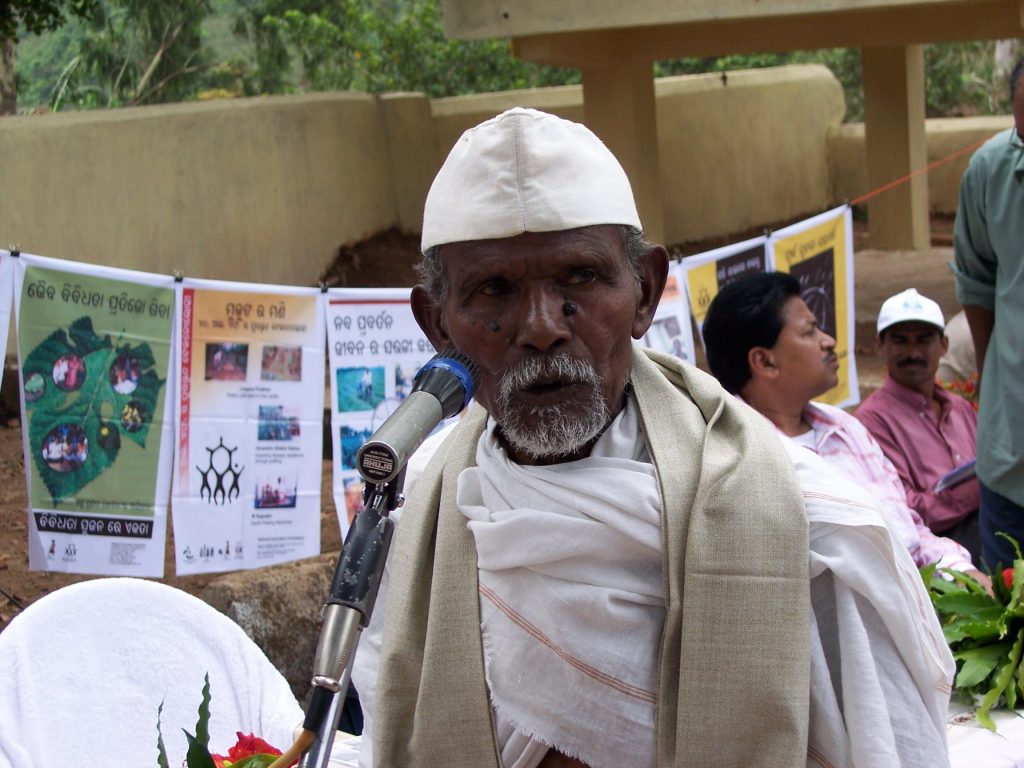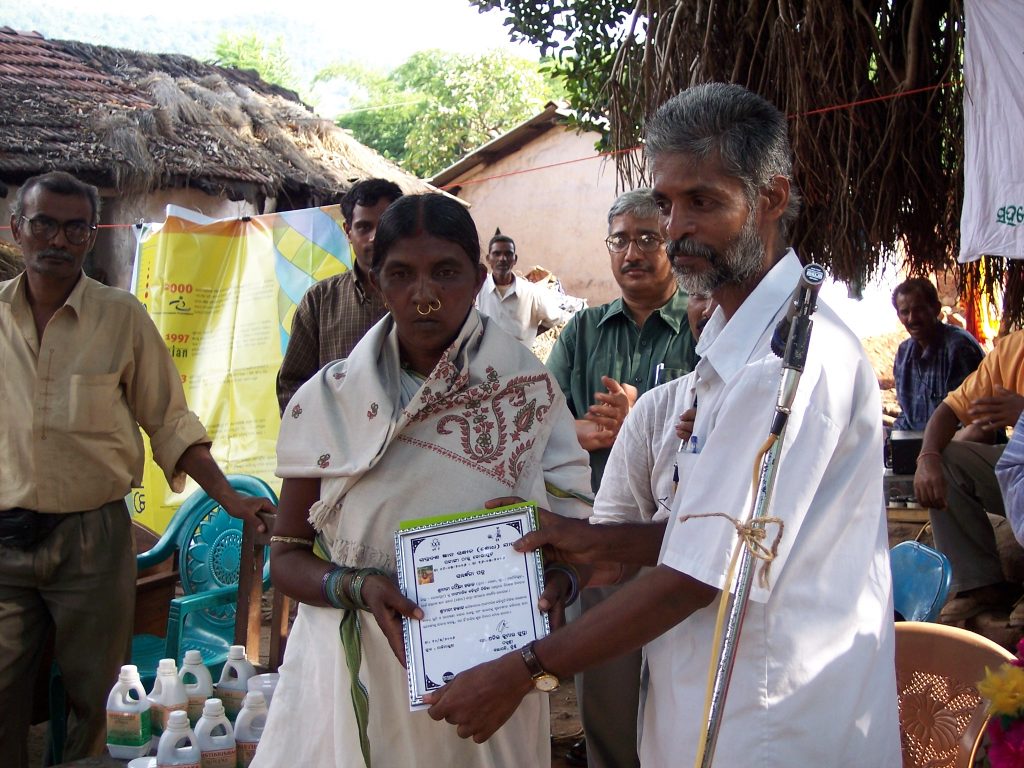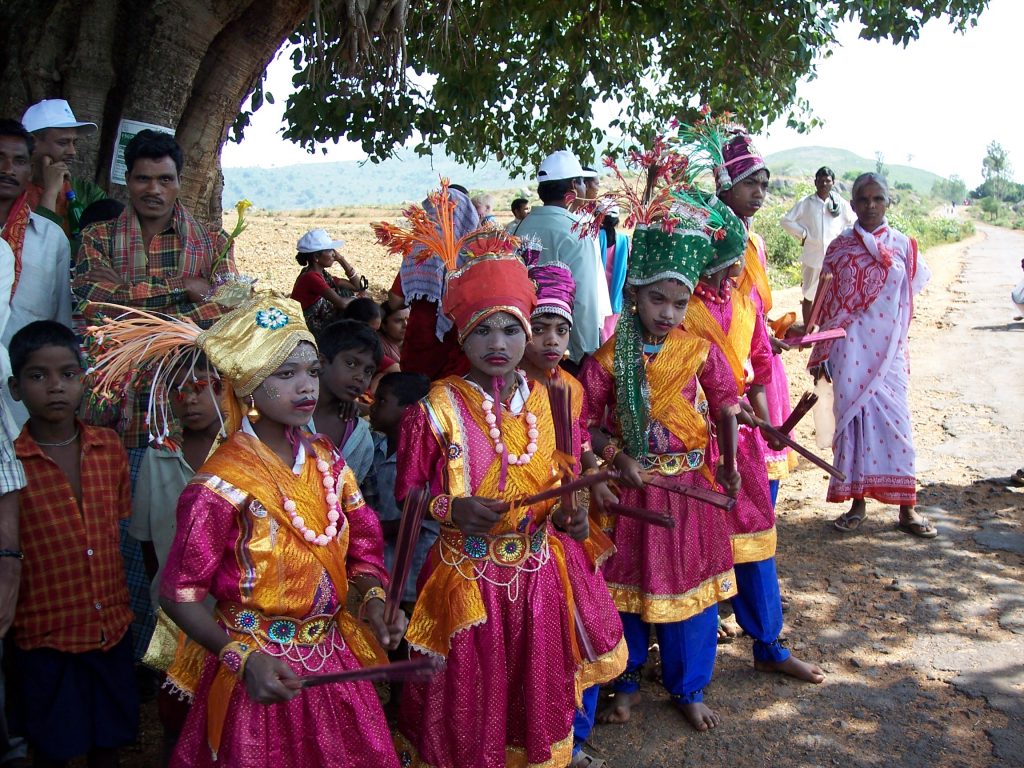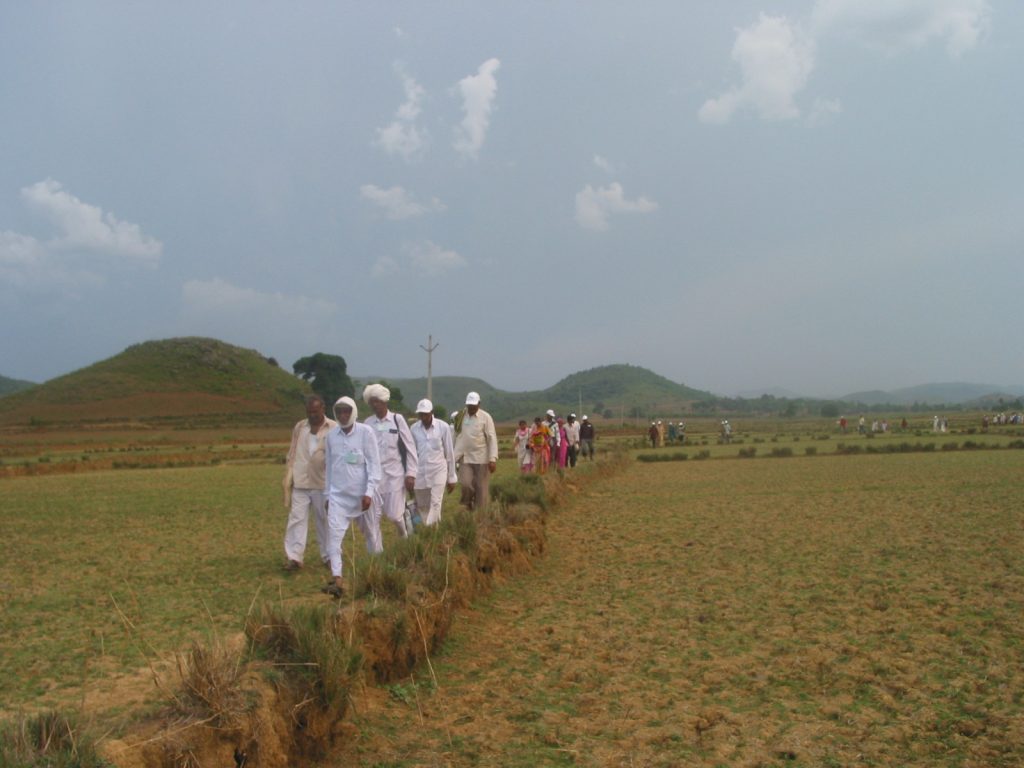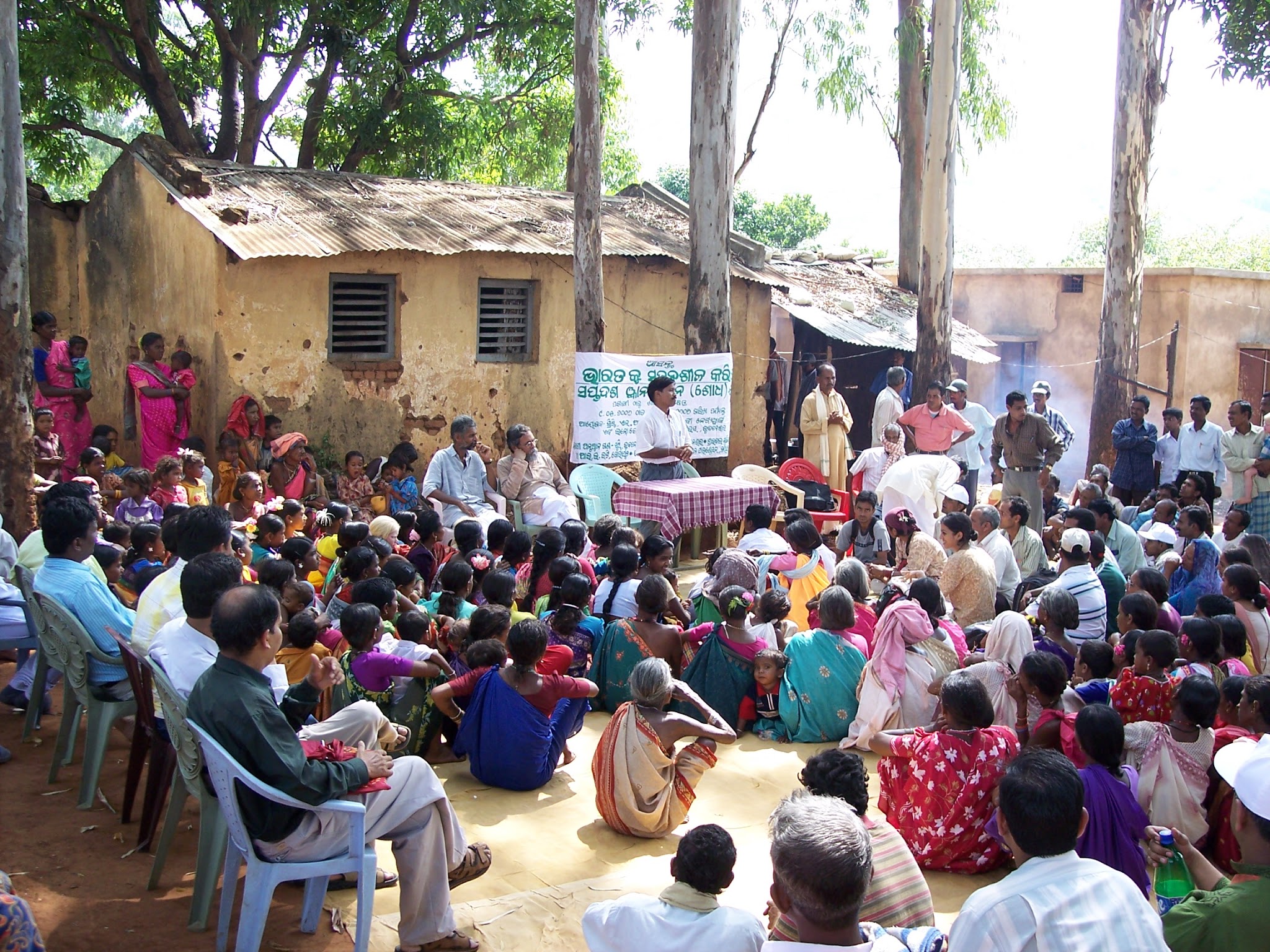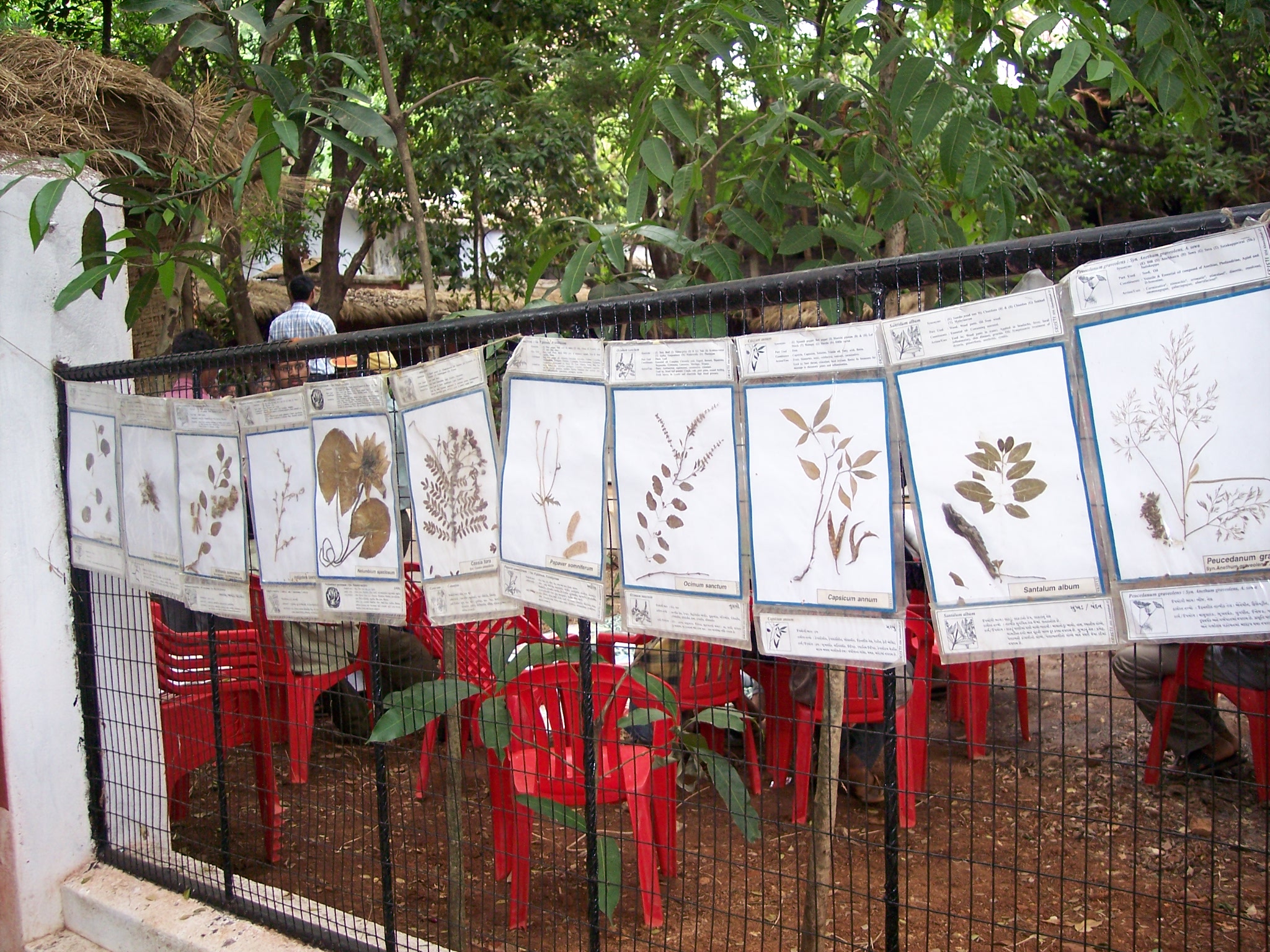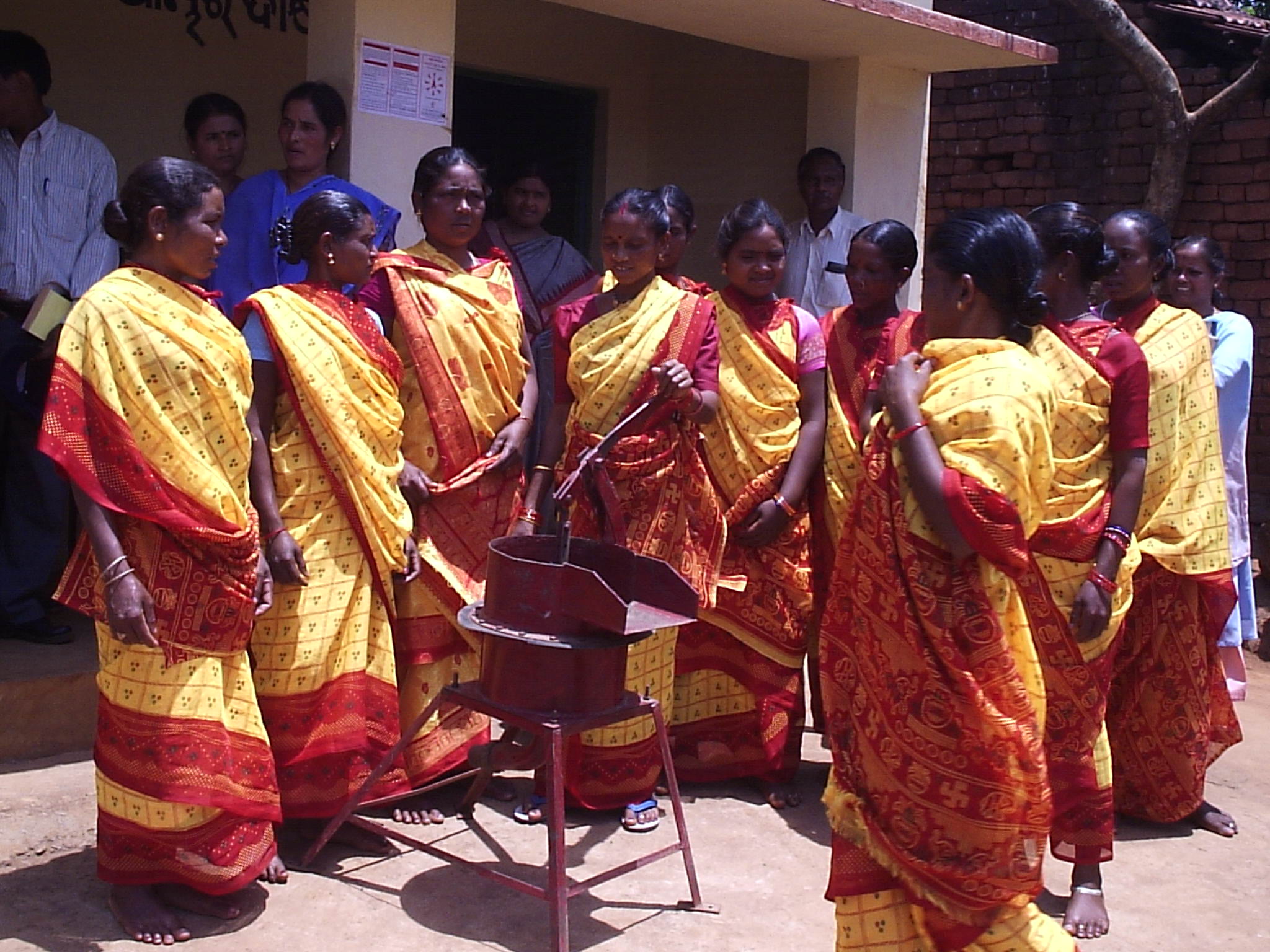Get Next Shodhyatra Update:
Phone:
079-27913293, 27912792
Email:
shodhyatra@sristi.org
17TH SHODHYATRA, POTANGI TO KORAPUT
The Seventeenth Shodhyatra organised by Honey Bee Network in the tribal dominated district of Koraput in Orissa produced a different image of the region and helped everyone to view it from a perspective of source rather than sink. After all, why has a region remained economically backward for so long, is it because it lacks new ideas, innovations or is it because the administrative institutions and markets have ignored the needs of local people? Please walk with us through the pages to learn what did we discover and why we feel very optimistic about this region, even if administration hesitates in making local knowledge as a basis of building new futures.
Having completed about 2800 km of walk with this Shodh yatra in the last eight years, we remained convinced that Honey Bee Network can indeed show a new way of development, if only we will care to listen to local voices of dissent, deviance and diversity. But the challenge is to mould the local anger into a pursuit of creative and innovative solutions. The local resources will have to remain accessible to tribals for them to use their knowledge for socio-economic transformation. Otherwise, will we have any right to complain if extremism takes over larger and larger territories in the region?
THE START UP
The Seventeenth Shodhyatra started from Ganga Maa temple in the Pattangi block of Koraput district in Orissa on 9th May 2006. Months of ground level planning and preparation before the Shodhyatra had set the stage for a tryst with nature and associated knowledge systems. The Shodhyatra covered a distance of 113 km, starting from Pattangi and culminating in Sabara Srikhetra. There were around sixty Shodhyatris from different parts of the country from as diverse professions as teaching, farming, accounting, community services etc.,and from different regions like Orissa, Maharashtra, Kerala, Karnataka, Tamil Nadu, Chhattisgarh, Gujarat, West Bengal, Andhra Pradesh, etc.
Honey Bee network collaborator, Dr Balaram Sahu and his friends, colleagues and local network members had worked very hard to create this learning and exploring journey possible in Koraput, Orissa.
The Jeypore tract in Koraput district is known as the birth place of rice. It is said that the district is home to more than three hundred indigenous varieties of paddy, many scented ones. The district is dominated by various tribal groups like Gadaba, Kandha, Juanga etc., and they have immense traditional herbal wisdom. Learning from indigenous wisdom, in a biodiversity rich region, under Naxalite influence made this Shodh yatra very different (Never before we had a police van trailing us, as it happened for first few days lest we strayed into unguarded territories or we needed the security help). The social imbalances which have made this region as one of the most poverty ridden region also made us inquisitive about the roots of the economic deprivation.
DIVERSITY, ETHICS AND CONSERVATION
In the inaugural meeting of the Shodhyatra, the administration was urged to initiate the institution of Village Knowledge Register (VKR) and start the experimentation itself with the schools. The two Block Development Officers (BDOs) of Pattangi and Semiliguda present during the meeting readily accepted the suggestion and promised to start the work on this issue from the coming educational year. Through out the yatra, we held several meetings, shared the Honey Bee database and felicitated more than seventy five innovators and traditional knowledge holders.
During the yatra we made some points repeatedly to draw the attention of people, opinion leaders, elected representatives and the district administration. It was emphasized that to stem the erosion of soil and water, people build check-dams. Similarly, in order to stem the erosion of knowledge, we need to document them through the Village Knowledge Register.
The VKR can comprehensively document issues and insights pertaining to soil, water, plants, animals, clouds, non-farm skills, etc. Unless we start thinking about knowledge based enterprises in the tribal areas, these regions will remain a source of cheap labour and materials. In each and every meeting, we explained the significance of protecting intellectual property rights of local people over their herbal knowledge and the safety net provided by Honey Bee Network and National Innovation Foundation (NIF) through the institution of Prior Informed Consent (PIC). They were advised that be it anybody ( including NIF or Honey bee network scouts), they must ask the knowledge collector about the possible use of knowledge in the short and long run before they share their knowledge. The knowledge seekers should show their willingness to enter into a fair contract with them if some thing valuable or unique was found out from it. Also, people must have a right to learn from other communities through local language documentation.
BIODIVERSITY COMPETITION
Biodiversity competition was held in two villages, Champakhenda and Kunduli. Twelve children participated in the competition with 112 plant names, usages and samples. R Manasi, a student of class seven joined the competition with a list of 87 plant names and more than seventy samples. What was astonishing about her was that she could confidently spell out the usages of the plant without looking at her text.
It seemed that creativity flowed in their family. Her brother, a visually challenged boy, joined the Shodhyatra at Kunduli and entertained the Shodhyatris with his skill of drum-beating. Her sister was a fine singer and her mother was awarded first prize in the recipe competition held in Kunduli.
RECIPE COMPETITION
Another recipe competition was held in Maliguda. The richness of the delicacies and the associated knowledge system can also be understood in terms of the blending of Telugu and Oriya culture. Historically, it has been observed that much of the cultural richness and diversity is concentrated in the areas where two cultures interact (cultural ecotone) and Koraput is no exception to it. In total, there were 65 participants, highest in any recipe competition organized during any Shodhyatra. The total number of recipes displayed during the competition was 182, again a record figure of highest number of recipes displayed in any recipe competition organized during the previous Shodhyatras.
The most appreciated and applauded dishes for both taste and aesthetics included various sags like pumpkin sag’, ‘koshala sag’, ‘gajar sag etc., manduru (a dish made from raagi), meeha (a ladoo made from raagi), muan bhat (a minor millet), mandia jau (raagi soup), phonji patra pitha (the leaf of phonji has curative properties for arthritis) etc. The recipe competitions demonstrated both, the diversity of local culture and the depth of neutriceutical knowledge.
CREATIVE CHILDREN
A science exhibition was organized among the school children at the Aeronautics High School in Sunabeda. One of the highpoints of the stay at Sunabeda was the innovative welcome extended to the Shodhyatris by the school children. They welcomed the yatris by lighting the candles that used jatropha seeds, traditionally used for this purpose. Thirty one participants from across the state participated in it. Some of the best student projects selected in the Childrens Science Congress of Orissa were displayed in the exhibition. The projects belonged to a very wide spectrum, ranging from bio-diesel preparation, sewerage management, and organic dyes for yarns, jute and textile to organic fertilizer, preservation of paddy germplasms etc.
Though most of the projects were actively guided by the teacher-mentors, the experimenting spirit of the children was also apparent. Some interesting futuristic projects like the bio-diesel candle, the innovative sewerage management system, fertilizer made from the horns of the dead animals were given prizes. It was felt that if teachers had not mentored the students, perhaps their own creativity could have blossomed much more.
LATERAL LEARNING AMONG YATRIS
The learning took place in shodh yatra not only from people but also from each other. Gurucharan Pradhan, a retired school teacher has devised a machine that can perform nine types of agricultural functions like cutting the hay, dehusking, separating rice from paddy, sharpening the blades, cutting of wood, lifting water, harvesting groundnuts etc. He shared his work enthusiastically with other villagers and also with fellow shodh yatris. Chakradhara Pradhan from Sambalpur has experimented with lemon trees for increasing the productivity such as cutting the bark of the lime plant for advancing the flowering date, and using stethoscope for sensing insect attack in the roots of trees. He has also systematically recorded the data on sale, production and distribution of plants since early nineties. His initiatives and diligence have, in past, been captured by national and international media.
Indramani Sahu, Jagatsinghpur is a versatile farmer-experimenter. He shared an interesting method of pest control. He uses smashed snails and packs them into several packets. Then he puts those packets at various places in his farm. He claims that this helps in repelling pests. Sahu has also spotted a local paddy variety called saanra, which if powdered and fed to the cows. It acts as a milk enhancer. Indramani also is a store house of various solar crop treatments. In fact, he has developed a whole regimen of solar-based plant treatments, especially for rice.
An interesting instance of community initiative to tide over water scarcity was seen in Mali Doliamba. Kabikarna Kirshani along with fellow villagers from Mali Doliamba built a three km long canal to irrigate their rain-fed farms in the face of stiff adversities (See the box for details)
Another interesting experimen-tation was seen in the farm of Prafulla Pangi in Taupadar. He intercropped alsi (linseed), ginger and beans, sown in that order. It is used as an interesting source of green manure. After alsi is ready, it is uprooted and laid on the field still having ginger and beans. After ginger and beans are harvested, the alsi is ploughed into the land to act as green manure. In his ginger field, Prafulla is undertaking experi-mentation with mulching. He has prepared different sets of mulching beds with three different leaves- banana, eucalyptus, and paddy straw and in some places stalks and leaves of pigeon pea.
In Maligunja village, a small exhibition on local varieties of rice, minor millets and pulses was organized. Within a small time, farmers brought four varieties of local paddy (three of which were scented varieties) such as lachai, ninamanjee, langadachai and jaya. There were three varieties of minor millets such as common ragi, mami- suan and sakara. The seven indigenous varieties of pulses that came up in the exhibition were kandula, dangar rani, buta samba, naka chana, biri, kala kolatha and simba mala. Most of the local varieties were cultivated by the farmers for their own consumption but they preferred growing improved or high yielding varieties to meet the market demand. In a meeting at Turia, an old lady farmer could easily recall eight varieties of indigenous scented rice, some of which were no more grown. In a meeting at Mali Doliamba, another old woman framer talked about twelve varieties of indigenous paddy. The experience proved that women, particularly old women were more familiar with the indigenous varieties of paddy than their male counterparts.
WOMEN CONSERVATORS
The icing on the cake was, Kamla Pujari, who has shot into international prominence with her effort in the field of conservation of indigenous variety of paddy. Her husband passed away at a young age. After the death of her husband, she has been cultivating all the varieties of indigenous paddy in a cyclical way.
She started the seed bank in her village and has been instrumental in the preservation of more than seventy two varieties of indigenous paddy in that locality. She started the seed bank with a personal contribution of around nine indigenous varieties and later on others started to joint her. She was supported by MSSRF, Chennai.
INDIGENOUS TOOLS
At Sunabeda school exhibition, we also met Mr Lakhmidara Sethi, an arduous preserver of innumerable traditional veterinary tools and instruments. With the onset of modern veterinary science and accessories, the traditional tools and instruments of feeding the livestock, chaining them,
gauging their body temperature etc., have virtually disappeared. Mr Sethi has preserved some forty plus such tools and instruments, mostly of wood and he is also trying to popularize them.
CHILD REPORTERS
The institution of child journalism was an interesting experiment in itself. It is believed that the observation of children is usually more unbiased and truthful than that of adults. Furthermore, the reporting by children involves aspects which adults often ignore. To foster this spirit of minute observation about the local problems and search for their solution within the local community, some local voluntary organizations have joined hands to promote child journalism.
Here children themselves collect the news and they are printed in a local bulletin with minimal editing. In fact, before being felicitated some of them had already interviewed the Shodhyatris and found out their likes, dislikes, opinions etc., about the region.
MOBILISING YOUTH FOR PEACE
Thenga Vahini, a local community policing initiative started by Laxman Das impressed the yatris a great deal. He joined on the sixth day of Shodhyatra. Originated in mid-eighties, the Thenga Vahini ( baton army, they have wooden rods and small pebbles as their weapons) has, of late ventured into the naxalite influenced areas of Orissa to wean away angry youth from the fold of violence. Till date, he has been able to mobilise twenty six young men and helped them integrate into the mainstream. Mr Das is rehabilitating many of the erstwhile extremists through agriculture. However, he dreams of further consolidating his ‘incentive structure’ for bringing back more angry young men from the path of violence and integrating them meaningfully into the civil society.
Mr Laxman Das is also a skilled farmer. He made a history when he cultivated rice on the sandy soil of Mahanadi river bank. He created bunds on the sandy soil and planted paddy within the two rows of the bunds. Even though there has been descriptions of polyculture where limited available space is used to grow multiple crops, there has not been any instance of growing paddy on sandy soil. The achievement of Laxman Das has been widely covered by the local and national media and he was invited to International Rice Research Institute (IRRI) Manila, Philipines to undertake further research.
INNOVATIONS IN MAKING
In a public meeting at Mali Marila, a lady breeder, Laxmidei Hantala was felicitated for her keen spirit of experimentation. She observed that in kankada (spine guard) after two female flowers, one male flower appears. She is experimenting with her breeding technique, so that she can produce ten female flowers in proportion to one male flower to increase the production of the spineguard. In a meeting with herbalists in Turia, Ramachandra Pujari demonstrated the way he treats arthritis and labour pain with the help of eight types of parasites.
Through out the yatra, numerous herbalists generously shared their knowledge with Shodhyatris. In some cases, the herbal treatment was blended with some kind of supernaturalism but in most cases they were based on proper observation and experimentation.
LEARNING WITH AN OPEN MIND AND HEART
In Sergiguda village an innovative ginger -storage system developed by local tribals was demonstrated. The Government-disseminated method, as widely practiced in the locality, dries up almost one third of the ginger before sowing. However, the method developed by the tribals of Sergiguda keeps all the ginger fresh. Similarly, in Mali Marua village,
indigenously prepared very fine powdered compost was spotted and it was so fine and free flowing that it could easily command a niche in the organic market. Farmers from Gujarat could not help appreciating a skill which tribals of the region had developed.
HEALING TRADITIONS
Koraput has a living tradition of herbal treatment. What could prove the point better, was a young tribal person Birshu, who showed ten different plants used for treating different kinds of pain within a span of hundred meters? However, what was also astonishing was the marked disinterest among the young generation to learn this living tradition. Except a few Birshus, most of the young men did not seem to be interested in herbal healing tradition.
In Gunthaguda village, an outstanding community knowledge pertaining to extraction of edible oil was observed. In fact, the villagers claimed that this community practice is hundred of years long. In this system of oil extraction, a whole series of activities are done before the actual edible oil is extracted.
They primarily use ‘karanj’ (Pongamia pinnata) for food and hair. The Villagers dry and boil ‘karanj’ seeds before extracting oil. A huge ‘dhenki’ (a device where the top part is moved by pushing the lower part) is attached to a jackfruit tree (in fact, all these traditional oil expellers are attached with jackfruit trees). The pressure put on the ‘dhenki’ presses the bag that contains the ‘karanj’ seeds and the oil is extracted and collected. The oil-cake is used as a biofertilizer. The seed thus is not only a source of food, cosmetics and personal care but also a source of bio-fertilizer.
MINING AND SOCIAL TENSIONS
During the walk, it was repeatedly pointed out that many bauxite rich areas in Mali mountain range have been opened up to the private mining interests (even if these were under protection given to local communities earlier). We were also told about numerous reportedly unethical means adopted by private mining companies in connivance with the state government to acquire the mining leases. We could sense considerable tension among local communities on account of anticipated eviction due to corporate mining in the region. It was very distressing to hear that no public hearing had been held and the whole process was being pursued in a subterfuge manner. The Shodhyatra experience underlined that the poverty of biodiversity rich areas like Koraput does not simply lie in the strategic exploitation by state and market forces but in the systematic exclusion of peoples knowledge from market place. Shodhyatris visited one of the traditional market places in Kunduli. To the surprise of all, products as petty as soaps came from Raipur (400 km away), other trinkets from Vizag but hardly any good made locally was found . Similarly, improved and hybrid seeds of companies as far as Taiwan were home to the Kunduli market except that of the local varieties. A day ago, sheer abundance of local tribal culinary skills had baffled the Shodhyatris at the recipe competition at Kunduli; but not a single such delicacy was found in the local market. If proper premium is not attached to the resources of the tribals and they are kept dependent upon external goods, impoverish-ment will be the only outcome. Worse still, we hardly found any working Primary health centre working on the route of yatra during our journey. Hardly any teacher of primary school lived in local villages.
The yatra provided insight to the yatris about some of the less explored cultural practices of the tribals of Koraput region. They observed that goat sacrifice is still prevalent in many parts of Koraput. The practice has been in vogue for generations to please the goddess of earth for bumper yield. The juxtaposition of tradition and modernity was apparent. On one hand, the tribal used the modern hybrid seeds and on the other hand, they held many deep seated unscientific cultural beliefs. But is not that true of all of us too?
The importance of sacred groves in the preservation of ecological balance was evident in Mali Doliamba village. As they are sacred, neither the plants nor the sacred places are encroached upon by the villagers. Numerous studies have proved that sacred groves have been refugia for many of the endangered species.
The yatris tasted a local fruit called gulab jamun. The name resembles one of the famous Indian sweet delicacies because it smells like that. The outstanding feature of the fruit is that its taste evolves with chewing. In fact, the fruit is so popular locally that a young social worker came up in one of the night meetings at Kunduli to seek guidance on how to establish an enterprise to carry the fruit to wider market.
Eight centurions were felicitated during the Shodhyatra. Out of them five were women, who were still very active and did most of their work independently. They recalled hazily the ‘khakhi’ trousers and shirts of the foreigners as the semblance of colonial era. They mentioned that earlier when people in khaki shorts came (they referred to British soldiers), they used to run away into forests. Not any more.
REFLECTIONS AND RESOLUTIONS
During the Shodhyatra, at Sunabeda, the yatris met for internal reflections. KP Mullick, one of farmer participants who represented Swanirbhar, an organization working to promote organic farming in West Bengal, had told that he had learnt some of the herbal remedies during the shodhyatra that he would experiment in his village. Maulik Raval, a student, talked about the possible experimentation of community radio in Koraput to tide over the communication gap. He was referring to what he saw the previous day.
Tribals, as distant as ten kilometers, across the Mali mountain had come to Turia, to collect their ration. However, they were told that the shop had run out of ration and it might be available sometime next week. Mr G Singhee suggested that the students of the nearby schools must be sent to the tribal hamlets on learning trip to gauge the reality of harsh life, internalizing the value of struggle and developing innovative solutions.
BEGINNING OF A NEW JOURNEY
In an instant bio-diversity knowledge competition held in the Sunabeda high school, the children were urged to do two things: a) sensitize their parents to undertake an audit of their monthly expenditure, find out what percentage of their spending was committed to the products/ commodities made by the tribal communities and b) assert their right to safe organic food. All the people were repeatedly told that unless we did not buy the products and commodities manufactured locally, the money would keep flowing outside and not help tribals improve their economic conditions. During the yatra, the administrative machinery was quite cooperative.
Both the BDOs (Block Development Officers) promised to begin the work on Village Knowledge Register from this educational year itself.
The yatra not only expanded the horizon of all the yatris but also made them see an economically poor region as source of knowledge, values and ideas and not just as a sink for draining aid, advice and assistance. One of them concluded: Shodhyatra was a living learning experience as I was walking along the mobile university of practical learning.
FLICKR GALLERY
